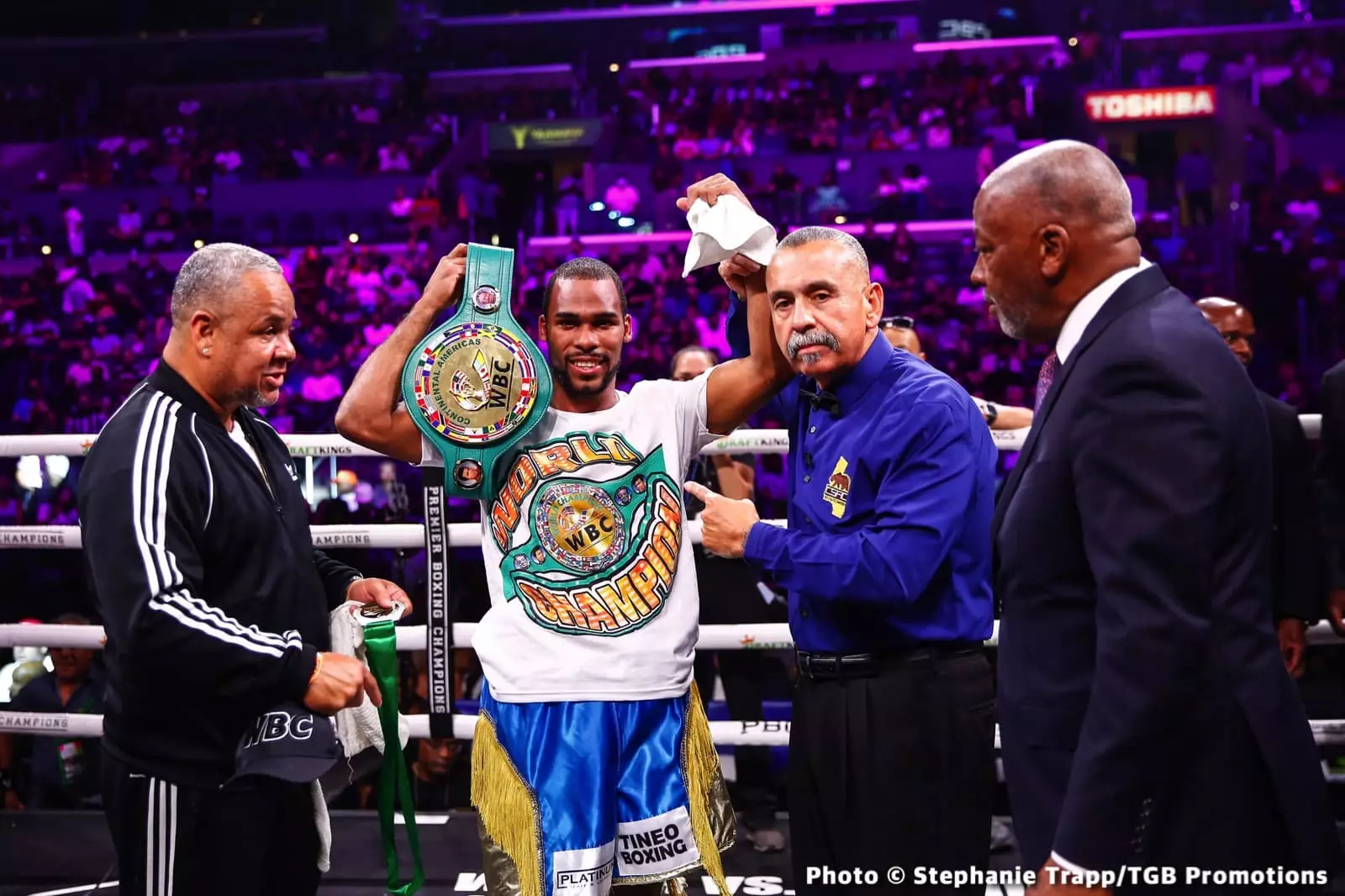The world of boxing is often a tightrope, balancing ambition and opportunity. At the forefront of this dynamic is Keyshawn Davis, the WBO lightweight champion. His upcoming title defense against Edwin De Los Santos on June 7th in Norfolk, Virginia, has caused quite a stir among fans and pundits alike. As a fighter who captured gold at the 2020 Olympics, Davis is looking to solidify his status as a future star in the ring. However, this bout raises questions about the decision-making of his promoters at Top Rank, particularly in choosing De Los Santos as his first challenger.
De Los Santos: A Fighter Past His Prime?
Edwin De Los Santos enters this contest with a record of 16-2, boasting a formidable knockout ratio of 14 KOs. His previous bouts against celebrated opponents like Shakur Stevenson have illuminated his potential. Yet, his recent inactivity—having not fought in two years—and an earlier loss to Stevenson cast a shadow over his viability as a credible challenger. Ordinarily, these factors would dissuade promoters from placing him in a title fight. Thus, fans are left scratching their heads as to why someone in De Los Santos’s position was favored over the likes of Andy Cruz, who holds a 4-0 record over Davis.
In boxing, the narrative often revolves around the notion of momentum. A fighter who has been out of the ring for an extended period faces immense challenges in terms of ring rust and conditioning. De Los Santos may possess the power to make an impact, but two years of inactivity complicates the matchup. It seems somewhat reckless for a prospect like Davis to face a fighter who has been out of action for so long. Perhaps this decision stems from an eagerness to maintain a storyline or leverage the potential for an upset, but at what risk?
Keyshawn’s Strategic Positioning
Davis is a colossal figure in the lightweight division, dwarfing opponents with his physicality. The strategic choice to remain at 135 pounds, despite many believing he should compete at welterweight, demonstrates his awareness of the advantages he holds. Being able to leverage size in the lightweight category allows him to impose his will on opponents—something that seems questionable at 147 pounds where fighters like Brian Norman Jr. and Jaron Ennis could present serious threats. His last bout against the experienced Denys Berinchyk showcased just how significant this size discrepancy can be in action.
Nonetheless, there is an inherent risk in overextending yourself in weight classes. Davis’s long-term viability will depend on how he manages this balance as he climbs the ranks. Fighters like De Los Santos may seem manageable, but this cherry-picking of challengers could eventually backfire if promotions do not adjust to account for unforeseen factors like a fighter’s inactivity.
The Road Ahead
In a sport where the narrative is just as important as performance, Davis’s trajectory will be closely monitored. His efforts to emerge as a boxing star align well with the business interests of Top Rank, yet the boxing community craves validation through well-matched, electrifying bouts. Fans desire to see champions tested against fighters who are not only skilled but fully engaged in the sport. How Davis adapts to this upcoming challenge, both in the ring and in his promotional journey, will define not just his career but the evolving landscape of lightweight boxing.

